Well that slants things a bit.....maybe.
Quick 'N Dirty you could do a stop-gap with serious upgrade possibilities that while not the ultimate can get you 1/2 way to good sound while
totally bypassing the sound card and at the same time if you are using a Windows OS PC,also get around K-Mixer.
That "stop-gap" is one of the PCM27xx based USB DACs,the ones with the dual SPDIF and Headphone output but with a twist because for the "just get the damn signal to the headphone amp" part the output labelled
Headphone Output on the data sheet could be also considered a
Line Output and if for line only use-such as for driving a dedicated headphone amp-you can lower the value of the large DC Blocking caps meant for obtaining good bass response with a low impedance load (Specced down to 32 ohms) to ones suited to a MUCH higher impedance line level input meaning you can now lower the value of that caspacitor so much that instead of the SQ killing electrolytic (Unless you use BG's

) you can now use a high quality film capacitor in the 4.7uF or so range which will be a MAJOR SQ increase for not a lot of loot.
The "stop-gap" parts is later,if you choose to,you can forego the new Line Output-to-Headphone Amp connection entirely and add a PCM DAC between the USB adapter and the headphone amp with that DAC of choice anything from mid-fi to ultra-fi by attaching the SPDIF output of the USB DAC to the SPDIF input of the PCM DAC !
This option allows you to decide where you want to take this system in $$$/performance,does NOT preclude the use of your current (or even a future upgrade of) sound card,allows a flaxability the USB DAC/Headphone amp combos can not because you are locked into using the headphone amp instead of having the option to upgrade ANY of the various sections in the future (or not

)
AND alows you to choose one of the many software based media players that use an ASIO interface on their outputs (you would still need a ASIO driver such as the free ASIO4ALL) which means in the end you can bypass/route around K-Mixer in USB mode while if you like simultaneously use you sound card output for anything you wish.
Ultimate flexability,good SQ,options in abundance,life is good ;D
If you do decide on this route a couple of points/suggestions:
1-Though these PCM27xx chips are "slammed" in certain quarters for there shortcomings I will tell you from personal experience they can and do flat out sound fine in real world/real folks without a boatload of loot/real system actul use and if you do a google on say "PCM2704 DAC" you will see a heavy margin to the side of good reviews.but audiophiles always trying to "one up" and manufacturers always trying to justify their own efforts you WILL find detractors.
2-Best "bang for the buck" version I know of is the Hagerman HagUsb and I say this because at $130 assembled ($49 for a half-kit with the dac chip installed) and a 30 day free trial it not only is hard to pass but my own DIY version is pretty much identical and I am pleased as all hell with it even though it truly looks like crap internally compared to the very nice pcb layout of the Hag Labs version which BTW,unlike
most interfaces of this type has a galvanically isolated SPDIF output,very much a major plus when compared to those with a simple resistor termination which offers ZERO isolation from computer ground as mentioned above (just gone about in the data stream realm rather than the analog realm ;D )
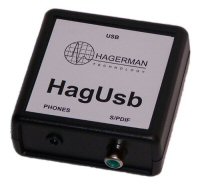
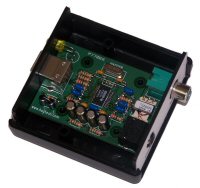
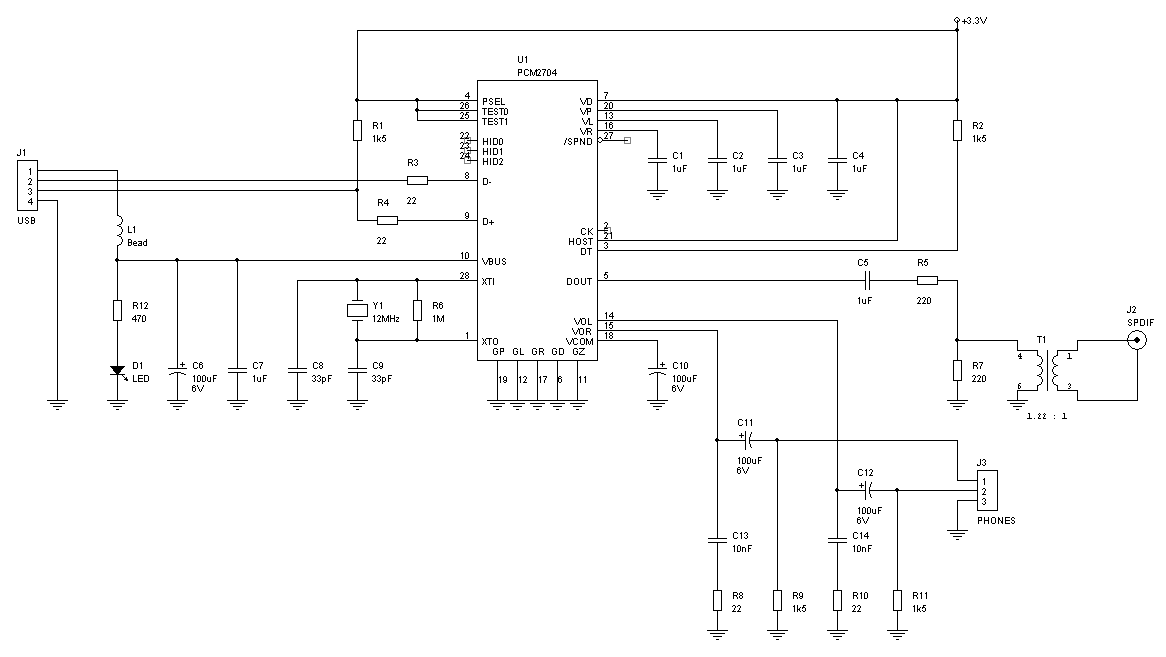 www.hagtech.com/hagusb.html
www.hagtech.com/hagusb.html3-SPDIF cables have a "quirk" that makes cable length to be taken seriously so if you want to avoid cable reflections between the USB interface and your DAC (if you choose to go this way now or in the future) you have two ways to go.Method one is to use a cable if the 6-9
foot range OR go ultra-short and use one in the 6-9
inch range (do a google on sPDIF cable reflections to get th skinny

).Either length offers you a wide selection of aftermarket cables to choose from (the one supplied with the pre-built HagUsb will get you off and running immdiately but you may want to "cable roll" later ;D ) but if you have some DIY or soldering skills my take on the BEST method,and especially in a close proximity dekstop system,would be to
LOSE the SPDIF output connector
entirely and instead solder a captive SPDIF "Pigtail" directly to the pc board !
This method avoids a connector in the signal path,always a good thing,and is used by Empiracal Audio's "USB Off Ramp"

Bel Canto with "shorty" cable
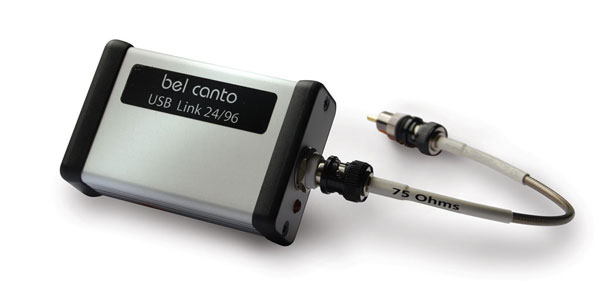
4-The "Ultimate" would be a PC/USB-To-SPDIF/Reclocker/PCM DAC/Headphone Amp path which this being a "building block" type system can be added at any time or if added it does not make any real discernable difference deleted from the path though in my experience as the resolution of your "mini-system" increases incrementally the addition of IS an improvement you can hear but
only if what follows can resolve the difference.Otherwise ?
save your money ;D
5-And finally,if you do go to the USB DAC+PCM DAC route and that PCM DAC is a 24 bit type then you can also add an SRC (Sample Rate Converter) of which there are several options available-some good,some shit.I left this for last because this is a I love it/I hate it add on so left for last it being more personal choice than it is recommended upgrade

Audio snobs/ultimate audio types will tell you to stay away from this type of USB interface but for the rest of us who just want to get the sound "out of the box" without taking a major beating in the wallet area or for that "system 2" office or bedroom system this is more than enough to satisfy in my own opinion.Think of this method as a "Sound Card Bypass" that does not take anything
away since it leaves your basic system intact but that can off another system option that you can take r leave as the mood hits just by plugging/unplugging what goes TO you headphone amp or better yet,if you add a simple "one-of-five" rotary selector can add even more input options to the amp creating a true mini-system on a desktop
BTW-If I were to go away from 100 modular I would take a good long look at this puppy.Very well thought out design for a price that won't kill ya
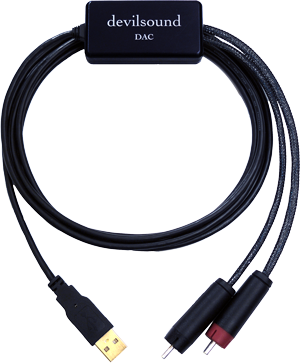 www.devilsound.com/DAC/
www.devilsound.com/DAC/